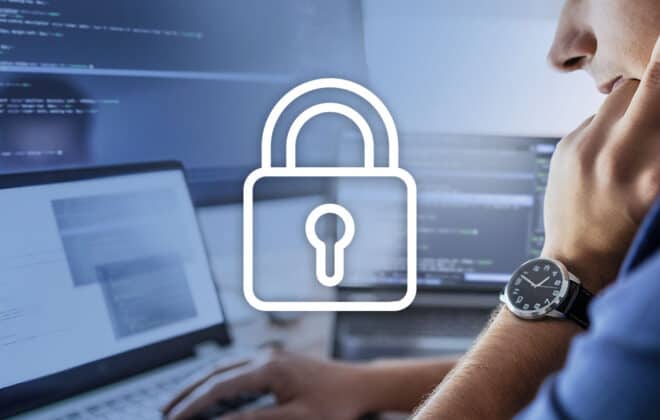Introduction
Secure software risks are everywhere. And, in an age of cyberattacks, they can impact anyone and everyone — including individuals, organizations, and governments. For that reason, ensuring security in software development is critical. Here we explain secure software development and give a compilation of seven best practices for secure software development.
What Is Secure Software Development?
Secure software development is an approach (often associated with DevSecOps) for building software that embeds security into every stage of the software development life cycle (SDLC). Security is embedded into the code initially rather than addressing it after testing uncovers serious product flaws. Security becomes an integral part of the planning phase, incorporated long before a single line of code is written.
Conventionally, developers see security as an obstacle to innovation and creativity, which creates delays in getting the product to market. This damages a businesses’ bottom line.
It costs six times more to fix a bug during the implementation phase and 15 times more during the software testing stage than to fix the same bug during the design phase.
Given below is a compilation of seven best practices for secure software development.
1. Patch the software and systems
Several attackers take advantage of known vulnerabilities linked with old or out-of-date software. To prevent common attacks, it is essential to make sure that all the organization’s systems have up-to-date patches. Regular patching is believed to be one of the most effective secure software development practices.
2. Educate and train teams for secure software development
Employee training for secure software development must be a part of your company’s security DNA. Possessing a well-organized and well-maintained security training curriculum for your employees will go a long way in safeguarding your data and assets. Bring in awareness training for all employees and secure coding training for developers. Do it periodically. And carry out simulations such as phishing tests to facilitate employees to spot and turn down social engineering attacks.
3. Automate tools and processes
Automation is the way when it comes to evening out the security integrations with speed and scale. The implementation of DevOps concentrates on automation, and the same holds true for DevSecOps. Automating security tools and processes make sure that the teams are keeping up with DevSecOps best practices.
Automation makes sure that tools and processes are utilized in a coherent, repeatable, and dependable manner. It’s vital to figure out which security processes can be automated, and which require some manual efforts. Record Your Security Policies
4. Record Your Security Policy
Maintain a knowledge repository that comprises thoroughly documented software security policies. Security policies enable the employees to make sense of all the activities you’re performing and why.
Also, it’s not sufficient just to have policies documented. Ensure everybody refers to them. Bare minimum, make that part of the onboarding process for new employees.

5. Integrate Security In SDLC
Consider embedding software security measures into your project’s software development life cycle (SDLC) from start to finish. Those activities must comprise architecture risk analysis, static, dynamic, and interactive application security testing, SCA, and pen-testing.
Building security into the SDLC does demand time and effort at first. But resolving issues early in the SDLC becomes a lot cheaper and much faster than waiting until post-development. Ultimately, it cuts down your exposure to security risks.
6. Treat Security Vulnerabilities As Software Defects
Security vulnerabilities are usually reported differently than quality and functional defects. Time and again, companies maintain the two types of findings—security and quality—in two different locations. This decreases the overall visibility of each team and role when they see their project’s overall security posture.
Maintaining security and quality findings in a centralized location facilitates teams to treat both issues in an identical manner and with the same importance. Security findings, particularly ones from automated scanning tools, can be a false positive.
It turns challenging, in such situations, to ask developers to review and fix those issues. One solution is to tune the security tooling over time by analyzing historical findings and application information and applying filters and custom rulesets to report only critical problems.
7. Encourage a DevSecOps Culture and Mindset
Primarily, DevSecOps comprises the integration of development, security, and operations across the SDLC. DevSecOps approach encourages and automates security procedures into every phase of the software development life cycle.
With DevSecOps, one can implement an agile, cost-effective, and adaptive process for rapid software development. Unquestionably, this is essential to fast-track vulnerability patching, support software security education, and boost collaboration across cross-departmental teams.
Certainly, practicing DevSecOps essentials is a distinguished way to secure your software development pipeline.
About the Author
Dan Levin – President
Dan is a founding member of Liventus and currently serves as the President. He oversees business operations, growth and manages software development.

